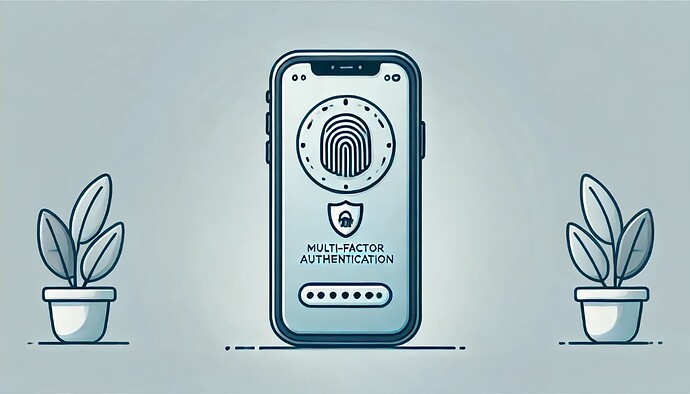One of the most effective ways to enhance your cybersecurity and protecting your online accounts and personal information on your device is by using Multi-Factor Authentication (MFA). This week, we’ll learn what MFA is, why it’s essential, and how you can set it up to safeguard your digital accounts.
What is Multi-Factor Authentication (MFA)?
Multi-Factor Authentication (MFA) is a security system that requires more than one method of authentication from independent categories of credentials to verify the user’s identity for a login or other transaction. The three main types of authentication factors are:
- Something you know: a password or PIN.
- Something you have: a smartphone, hardware token, or smart card.
- Something you are: biometric data like fingerprints or facial recognition.
Why is MFA Important?
MFA increases the security of your accounts by adding an extra layer of protection. Even if a cybercriminal obtains your password, they would still need the second factor to gain access. Here are some compelling reasons to use MFA:
- Enhanced Security: MFA makes it much harder for attackers to gain unauthorized access.
- Prevention of Phishing Attacks: Even if you accidentally disclose your password in a phishing attack, MFA can prevent the attacker from accessing your account.
- Real-World Examples: Many high-profile data breaches could have been prevented with MFA. Companies like X, Instagram, and Google have implemented MFA to protect their users.
How Does MFA Work?
When you enable MFA, logging in method has at least two steps:
- Enter your password.
- Verify your identity using a second factor: This could be a code sent to your phone, an authentication app, or a biometric scan.
Benefits of MFA
- Increased Security: Protects against various forms of cyberattacks.
- Reduces Risk: Lowers the chance of account compromise.
- Peace of Mind: Provides an extra layer of security for your sensitive information.
Implementing MFA
Setting up MFA is straightforward and well worth the effort. Here’s how to enable MFA on some popular platforms:
- Google: Go to your Google Account settings, select “Security,” and enable “2-Step Verification.”
- Microsoft: Navigate to your account settings, select “Security info,” and add a new sign-in method.
- Social Media Accounts: Most platforms like Facebook, X, and Instagram have options to enable MFA in their security settings.
Overcoming Common Challenges
Some people may find MFA inconvenient, but the security benefits far outweigh the minor hassle. Some tips to make the transition smoother:
- Authenticator Apps: Use apps like Google Authenticator, Microsoft Authenticator, or Authy for easier management of MFA codes.
- Backup Codes: Keep a set of backup codes in a safe place in case you lose access to your primary MFA method.
- Biometric Methods: Use biometric methods (fingerprint or facial recognition) for quick and secure access.
Multi-Factor Authentication with an extra layer of security, can protect your accounts and personal information from unauthorized access. Take action today by enabling MFA on all your critical accounts and encourage others to do the same. Don’t wait until it’s too late—protect your accounts now!
Stay safe and secure online!
Security Team, Complaint Hub
Resources:
